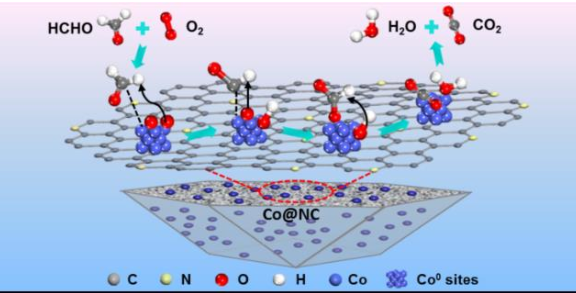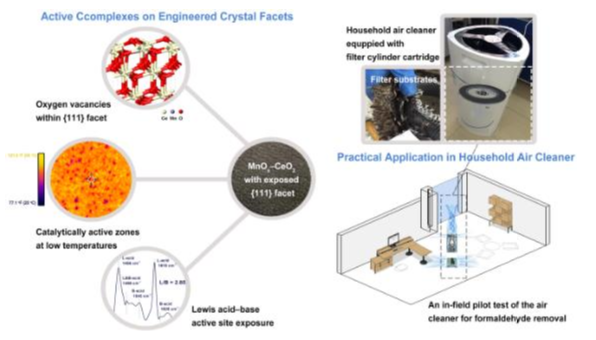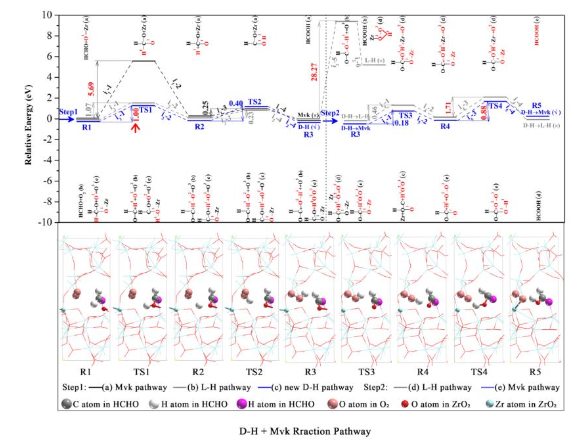[ Instrument Network Instrument Development ] Formaldehyde is a typical indoor air pollutant with teratogenic and carcinogenic effects. The traditional adsorption/absorption formaldehyde purification technology is prone to secondary pollution, and it is difficult to meet the national indoor air quality standards in practical applications. Different from the traditional adsorption/absorption aldehyde removal technology, formaldehyde normal temperature catalytic oxidation technology induces catalytic reaction by means of nanocatalyst self-lattice oxygen or activated adsorption oxygen, and realizes complete mineralization of formaldehyde under normal temperature and normal pressure conditions, with high efficiency and environmental protection. There is a broad application prospect, and the development of efficient formaldehyde normal temperature purification technology is currently a research hotspot.

In view of the limitation of temperature in the complete catalytic oxidation of formaldehyde by traditional transition metal oxides, Huang Yu, a researcher at the Institute of Earth Environment, Chinese Academy of Sciences, recently developed a series of room temperature catalytic materials through phase interface construction and crystal plane control. The degradation and purification of formaldehyde were revealed, and the mechanism of its influence on the catalytic oxidation of formaldehyde intermediates and processes was revealed. Related research results are published in Applied Catalysis B: Environmental, Chemical Engineering Journal, Environmental Science & Technology and other journals.
The process of oxidative conversion of formaldehyde to formic acid is one of the rapid steps of the oxidation reaction of formaldehyde. In this process, the reaction energy barrier is higher and higher temperature is required. Based on the important role of molecular oxygen O2 activation in the oxidation of formaldehyde, the team developed carbon-coated metal Co nanoparticles (Co@NC), which has a high stable removal capacity for formaldehyde at room temperature, and its catalytic performance is affected by The effect of humidity is small (Applied Catalysis B: Environmental 2019, 258, 117981). In addition, the team successfully prepared zirconia homogenous heterojunction (TMZ), which effectively promoted the activation of molecular oxygen at the interface. Using DFT calculation and in-situ infrared spectroscopy, a new mechanism of DH + Mvk catalyzed by formaldehyde at room temperature is proposed. The final step of the reaction is the combination of active H atom and surface lattice oxygen dissociated by formaldehyde CH. . This work enriches the normal temperature catalytic reaction pathway of formaldehyde and provides theoretical support for the design of room temperature catalytic materials for efficient removal of formaldehyde (Chemical Engineering Journal 2020, 380, 122498). Furthermore, the team collaborated with Li Shuncheng, a professor at the Hong Kong Polytechnic University, to regulate the three main dominant crystal faces of MnOx–CeO2 (MCO). The system revealed its effects on the formation and quantification of oxygen vacancies, catalytically active regions and acidic active sites. (Environmental Science & Technology, 2019, 53, 18, 10906-10916). At present, the series of formaldehyde high-efficiency purification of new materials has achieved large-scale production, laying a foundation for the large-scale application of room temperature catalytic materials.
The above work was funded by the National Key R&D Program Nanotechnology Key Project (2016YFA0203000), the National Natural Science Foundation, and the Chinese Academy of Sciences Hundred Talents Program.

Figure 1. Schematic diagram of Co@Nc room temperature catalytic oxidation of formaldehyde and reaction path C (top) (from Applied Catalysis B: Environmental 2019, 258, 117981.); morphological regulation and active center study of MnOx–CeO2 catalyst and its presence in air Purification device test (bottom) (from Environmental Science & Technology, 2019, 53, 18, 10906-10916).

Figure 2. New mechanism for the catalytic oxidation of DH + Mvk at room temperature on the ZrO2 monoclinic-tetragonal heterojunction interface (from Chemical Engineering Journal 2020, 380, 122498).
Linear Actuators For Smart Furniture
Linear Actuator,Recliner Chair Parts,Dc Sofa Linear Actuator,Linear Actuators For Smart Furniture
ZHEJIANG XINYI INTELLIGENT DRIVING TECHNOLOGY CO.,LTD , https://www.xinyiactuators.com